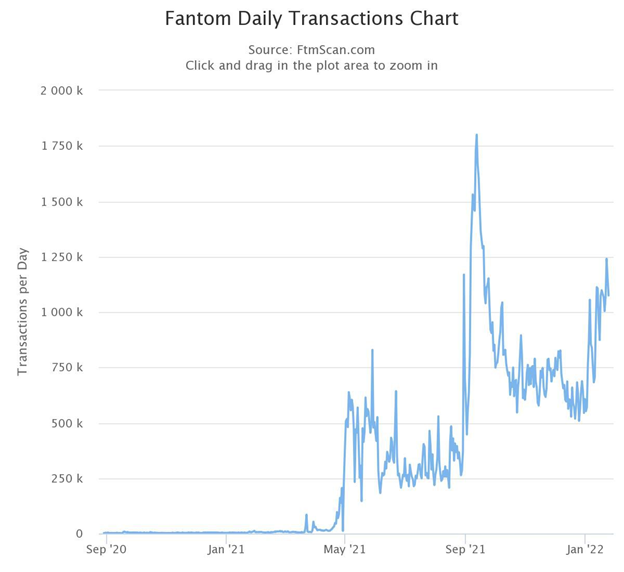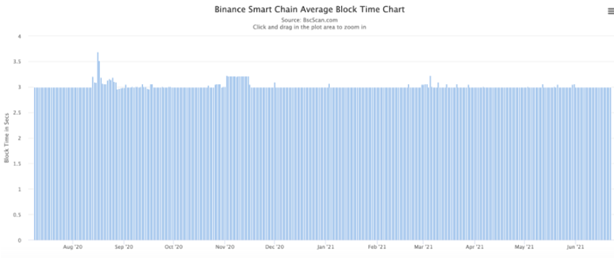Binance and Ethereum Smart Chain What’s the Difference Between Full Details are Given Below.
TL;DR
Binance Smart Chain (BSC) is a fork of the Go Ethereum (Geth) protocol that resembles the Ethereum blockchain in many ways. Developers of the BSC, on the other hand, have made significant changes in a few key areas. The most major advancement is BSC’s consensus method, which allows for cheaper and faster transactions.
Introduction
Binance Smart Chain (BSC) and Ethereum appear to be extremely similar at first glance. The Ethereum Virtual Machine is compatible with BSC-based DApps and coins (EVM). You may have observed that your public wallet addresses on both blockchains are identical. There are even projects that function on both networks that are cross-chained. Despite this, there are several notable differences between the two chains. It’s vital to know and grasp the distinctions if you’re unsure which one to utilize.
Blockchain traffic and DApp ecosystem
Ethereum has around 2800 DApps on the blockchain as of June 2021, compared to over 810 on BSC. It’s a big change, but given BSC’s youth, it indicates a healthy and expanding environment.
Another key on-chain indicator to examine is active addresses. Despite being a younger blockchain, BSC surpassed Ethereum’s all-time high of 799,580 addresses on May 9, 2021, with a peak of 2,105,367 addresses on June 7, 2021.
So, what’s the story behind BSC’s meteoric rise? Faster confirmation times and minimal fees account for a large part of it. The increasing popularity of NFTs, as well as their interoperability with popular crypto wallets like Trust Wallet and MetaMask, may be contributing to BSC growth.
When it comes to everyday transactions, the disparity between the two is much more pronounced. Users may move cash and engage with smart contracts faster and more cost-effectively on BSC. BSC’s high of about 12 million daily transactions may be seen below, as well as its present state of around four million.

Ethereum, on the other hand, has never seen more than 1.75 million daily transactions. BSC appears to be the more popular option for consumers that need to shift their funds on a frequent basis. Daily transactions must also be viewed in light of active addresses. As of this writing, BSC has a larger number of users who, on average, transact more.

Most used DeFi DApps on Ethereum and BSC
Due to the compatibility of the blockchains, there is a lot of DApp cross-over between BSC and Ethereum when it comes to decentralized finance. Developers can easily transfer Ethereum apps to BSC, and new BSC projects frequently reuse Ethereum open-source code under a different name. Let’s take a look at the top five Ethereum DApps according to DAppRadar users.

A mix of two Defi Automated Market Makers (Uniswap and SushiSwap), a crypto game (Axie Infinity), and a peer-to-peer marketplace may be found here (OpenSea). If you check at BSC’s top five, you’ll notice a lot of overlap.

As a hard fork of Uniswap, PancakeSwap was built. Yield farms, such as Autofarm and Pancake Bunny, aren’t represented in Ethereum’s top five. Automated Market Makers Biswap and Apeswap are both automated market makers. Yield farms tend to be more efficient on Binance Smart Chain because fees are so low and transactions are so fast. Because of these qualities, they are a popular choice with BSC users.
When it comes to crypto games, Ethereum is unquestionably the most popular platform. Although there are projects on BSC that are quite similar to CryptoKitties and Axie Infinity, they have not attracted the same level of attention as the Ethereum classic games.
Transfers between networks
You may have noticed that your Ethereum and BSC wallet addresses are identical if you’ve made any BEP-20 or ERC-20 deposits into your wallet. So, if you withdraw your tokens from an exchange and choose the wrong network, you may easily retrieve them from the other blockchain.
If you withdraw ERC-20 tokens to BSC by mistake, they will still be available at the relevant BSC address. If you unintentionally send tokens from BSC to Ethereum, you can follow the same steps. Your funds are not permanently lost in either of these circumstances. Check out How to Recover Crypto Transferred to the Wrong Network on Binance for more complete instructions.
Transaction fees
For transaction fees, both BSC and Ethereum utilize a gas model that measures transaction complexity. Miners will favour transactions with greater gas costs if BSC users specify a gas price based on network demand. The London hard fork of Ethereum, on the other hand, introduces certain new features that are expected to eliminate the need for hefty fees.
The Ethereum upgrade introduces a new block-based pricing system. The basic cost fluctuates in response to transaction demand, eliminating the need for users to set their own gas prices.
Gas fees on Ethereum have historically been substantially greater than those on BSC. In May 2021, the highest average was $68.72. Although the trend has begun to reverse, Ethereum remains the more expensive cryptocurrency at the moment.

To gain a clearer understanding, let’s take a look at the typical Ethereum costs from Etherscan. The first three graphs depict Ethereum’s current gas pricing. One gwei represents 0.000000001 BNB or ETH in both BSC and Ethereum. The process will take much longer if you pay the cheaper price.
At the time of writing, the average price for transferring an ERC-20 token from one wallet to another was $2.46. When a Uniswap liquidity pool with numerous transactions is used, the cost rises to $7.58.
Below is an example of a BSC transaction with a charge of $0.03, which is similar to an ERC-20 transfer in the Ethereum gas tracker. BSC determined this by multiplying the amount of gas utilized in the transaction (21,000) by the price of gas (5 gwei).
Transaction time
It can be difficult to calculate typical transaction times on blockchains. While a transaction is technically complete after miners validate the block in which it is contained, there are a number of factors that can influence how long you have to wait:
- Miners may delay or even refuse to include your transaction in a block if you haven’t set your fee high enough.
- Multiple transactions are required for more complicated interactions with the blockchain. Adding liquidity to a liquidity pool, for example.
- After a specific number of blocks have been confirmed, most services will consider a transaction genuine. These extra confirmations lower the danger of payments being refunded to merchants and service providers if the block is rejected by the network.
The transaction time for Ethereum ranges from 30 seconds to 16 minutes, according to the gas data shown above. These figures include successful transactions but exclude the additional confirmation needs.

If you deposit ETH (ERC-20) into your Binance account, for example, you must wait for 12 network confirmations. With a block mined typically every 13 seconds, as seen in the graphic below, putting ETH into your spot wallet would take an extra 156 seconds.
The average block duration on BSC is 3 seconds. When we compare this to Ethereum’s 13 seconds, we’re looking at a 4.3-fold increase in speed.

Consensus mechanism
While Ethereum’s Proof of Work (PoW) consensus process is similar to Bitcoin’s, it differs significantly from BSC’s Proof of Staked Authority (PoSA). This disparity, however, will not endure long. Instead of using a Proof of Work (PoW) mechanism, Ethereum 2.0 will employ a Proof of Stake (PoS) mechanism.
Proof of Authority (PoA) and Delegated Proof of Stake (DPoS) are combined in BSC’s PoSA (DPoS). 21 validators take turns producing blocks and are rewarded with BNB transaction fees in exchange. In order to be elected as a validator, you must first run a node and stake at least 10,000 BNB.
Delegators are users who put their BNB behind a candidate who has been elected. The top 21 candidates in terms of money staked will next take turns processing blocks. Every 24 hours, the entire process repeats itself. Delegators also partake in the incentives earned by validators.
Ethereum’s Proof-of-Work (PoW) is a completely distinct system. There is a competition to solve a computational challenge instead of the community choosing validators. Anyone can participate, although specialized mining equipment must be purchased or rented. You’re more likely to solve the puzzle first and validate a block if you have more computing power. Successful miners are rewarded with transaction fees and ETH.
While PoW is a good approach to get everyone to agree and ensure network security, developers have since looked into other options. Its mission is to find more efficient and environmentally sustainable options while maintaining security.
The Ethereum network will eventually convert to Proof of Stake for these reasons. Validators will put up ETH in exchange for the opportunity to create blocks. Other validators will “attest” to the block and make sure it’s correct. Anyone who creates a block that contains fake transactions risks losing all of their staked currency. Validators are rewarded for successful blocks as well as any attestations they provide. Malicious validators risk losing their assets by directly depositing and staking significant amounts of ETH.
Closing thoughts
It’s evident that Binance Smart Chain and Ethereum have a lot of similarities. This is one of the reasons why Ethereum users have found it so simple to switch to BSC and begin playing with it. Despite their commonalities, BSC made some intriguing improvements in an attempt to increase performance and efficiency. Users can now enjoy even cheaper and faster blockchain transactions thanks to the Proof of Staked Authority (PoSA) consensus method.

